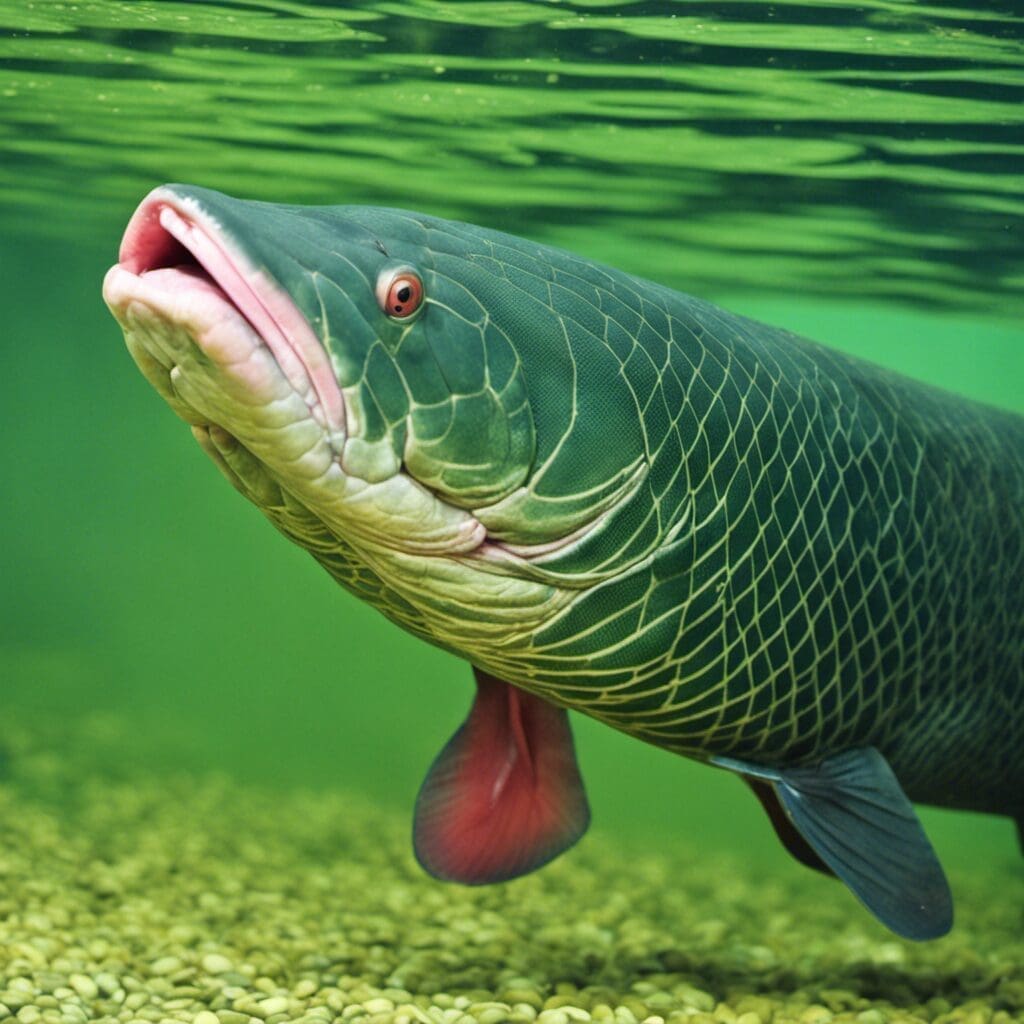Introduction
The Arapaima is a large species of fish and it is part of the family Arapaimidae. This freshwater giant is native to the Amazon Basin in South America and is synonymous with the Amazon River.
Conservation Status
The Arapaima has a current conservation status of Data Deficient according to the IUCN Red List. This is due to the lack of up-to-date information about its population trends and threats. However, it’s known that over-fishing for commercial and subsistence purposes is a primary concern for the species.
Statistics
| Average | Range | |
|---|---|---|
| Length | 2-2.5m | 1-3m |
| Weight | 90-135kg | 35-200kg |
| Average Lifespan | 15-20 years |
Distribution
The Arapaima is primarily found in the Amazon River Basin, across Brazil, Guyana, and Peru. They do not have any particular migration patterns but can adapt to seasonal changes in their habitat.
Habitats
The Arapaima lives in freshwater environments; they predominantly found in lakes, swamps, and floodplains. They can adjust to a wide range of conditions, even those with lower levels of oxygen which they compensate for by taking gulps of air above the water’s surface.
When and Where to See
Arapaimas can be seen all year round due to their diversity in habitats. The best times to observe Arapaima are in the early morning or late afternoon when they come to the surface to breathe.
Best Fishing Locations
- Amazon River, Brazil
- Rupununi River, Guyana
- Ucayali River, Peru
When looking for Arapaima, scout for areas with less traffic and where the water is relatively shallow.
How to Catch
The recommended technique for catching Arapaima is fly fishing, and they have been known to take baits such as artificial frogs or small fish. The best time to catch Arapaima is during the dry season when the water levels are low.
Identification Guide
Arapaimas are easily recognisable due to their large size, torpedo-shaped bodies, and the distinctive upturned mouth. Adult specimens have a dark back and a reddish or pinkish belly.
Culinary
Arapaima is consumed in several regions in South America, particularly Brazil where it’s called “Pirarucu”. It is typically grilled or baked and is considered a delicacy. Arapaima has a mild, slightly sweet flavor, and it’s rich in proteins.
Additional Information
Arapaimas are carnivorous, feeding largely on fish, crustaceans, and insects. They use a mouth-opening technique to create suction that pulls in nearby food. Arapaimas mate annually, usually during the dry season.
References and Further Reading
Please consult the IUCN Red List and FishBase for more detailed information.

